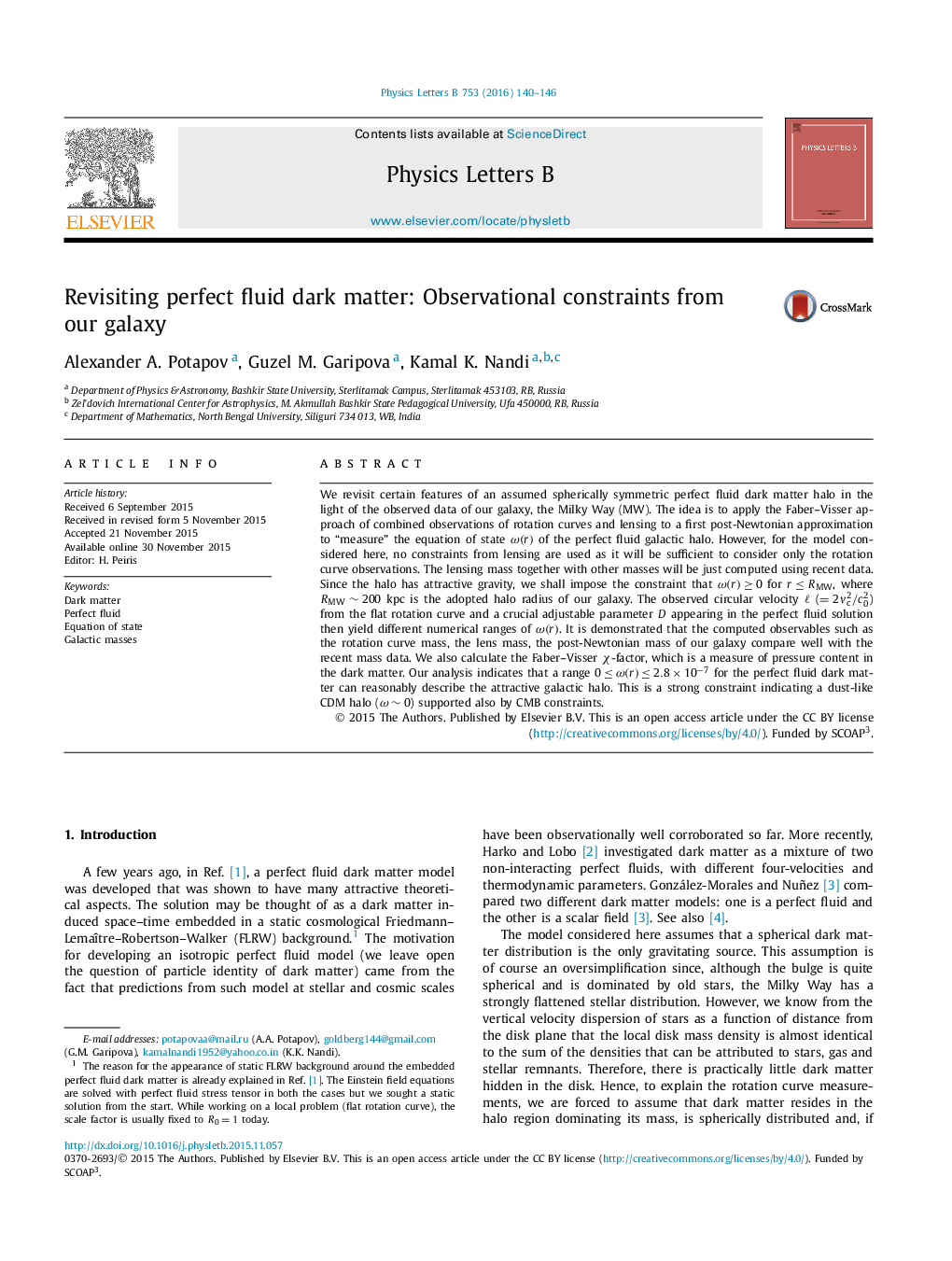| Article ID | Journal | Published Year | Pages | File Type |
|---|---|---|---|---|
| 1850476 | Physics Letters B | 2016 | 7 Pages |
We revisit certain features of an assumed spherically symmetric perfect fluid dark matter halo in the light of the observed data of our galaxy, the Milky Way (MW). The idea is to apply the Faber–Visser approach of combined observations of rotation curves and lensing to a first post-Newtonian approximation to “measure” the equation of state ω(r)ω(r) of the perfect fluid galactic halo. However, for the model considered here, no constraints from lensing are used as it will be sufficient to consider only the rotation curve observations. The lensing mass together with other masses will be just computed using recent data. Since the halo has attractive gravity, we shall impose the constraint that ω(r)≥0ω(r)≥0 for r≤RMWr≤RMW, where RMW∼200 kpcRMW∼200 kpc is the adopted halo radius of our galaxy. The observed circular velocity ℓ (=2vc2/c02) from the flat rotation curve and a crucial adjustable parameter D appearing in the perfect fluid solution then yield different numerical ranges of ω(r)ω(r). It is demonstrated that the computed observables such as the rotation curve mass, the lens mass, the post-Newtonian mass of our galaxy compare well with the recent mass data. We also calculate the Faber–Visser χ -factor, which is a measure of pressure content in the dark matter. Our analysis indicates that a range 0≤ω(r)≤2.8×10−70≤ω(r)≤2.8×10−7 for the perfect fluid dark matter can reasonably describe the attractive galactic halo. This is a strong constraint indicating a dust-like CDM halo (ω∼0ω∼0) supported also by CMB constraints.
